While broadcast radio might not be perceived as the flashiest option for advertisers amidst the rise of social media, podcasts and music streaming, new data from Edison Research and NPR indicates that the medium is still highly engaging its core audience.
Edison conducted an online survey of 1,500 weekly AM/FM radio listeners, 18+, earlier this year, looking closely at who those listeners are and how big a role the medium is still playing in their lives. The data was then weighted to Edison and Triton Digital’s long-running Share of Ear study.
According to Share of Ear research, 63% of Americans are listening to radio every day as of the fourth quarter of 2020 with 89% tuning AM/FM radio weekly. Audio listeners are still spending twice as much time with radio – which is capturing 41% of all audio listening time – vs. pure play streaming sources (18%), listeners’ second go-to.
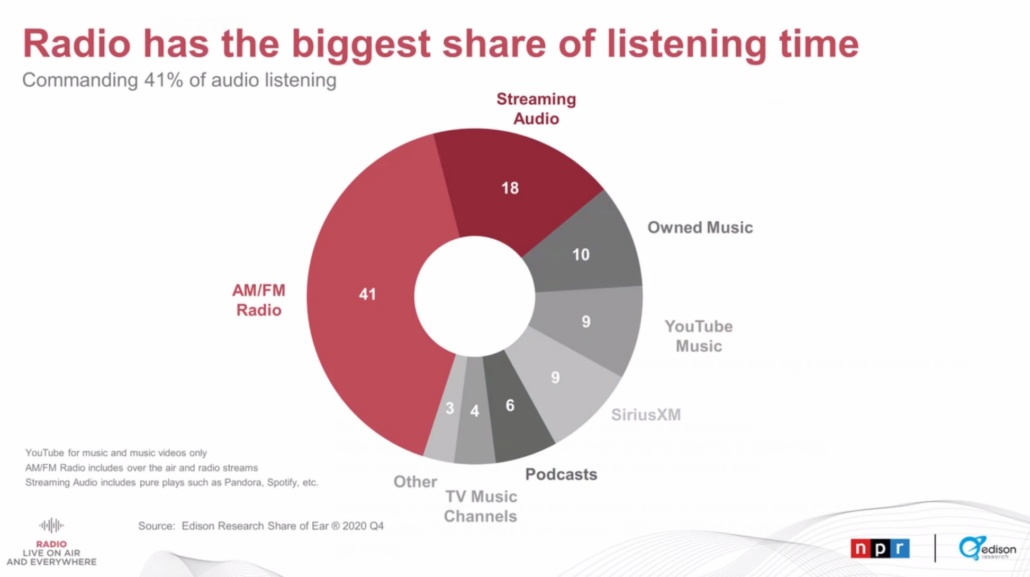
Radio: Live On Air and Everywhere found that there are six types of radio listeners across a spectrum of engagement. Ranked by time spent listening:
Radio Heads (9%): Radio’s biggest enthusiasts and the central core of radio listeners, who use radio for everything. More likely to be female and over-index in listeners who are Black or African-American. Almost half are in the 35-54 age category. They are all around audiophiles with higher than average listening to online audio, streamed AM/FM, and YouTube.
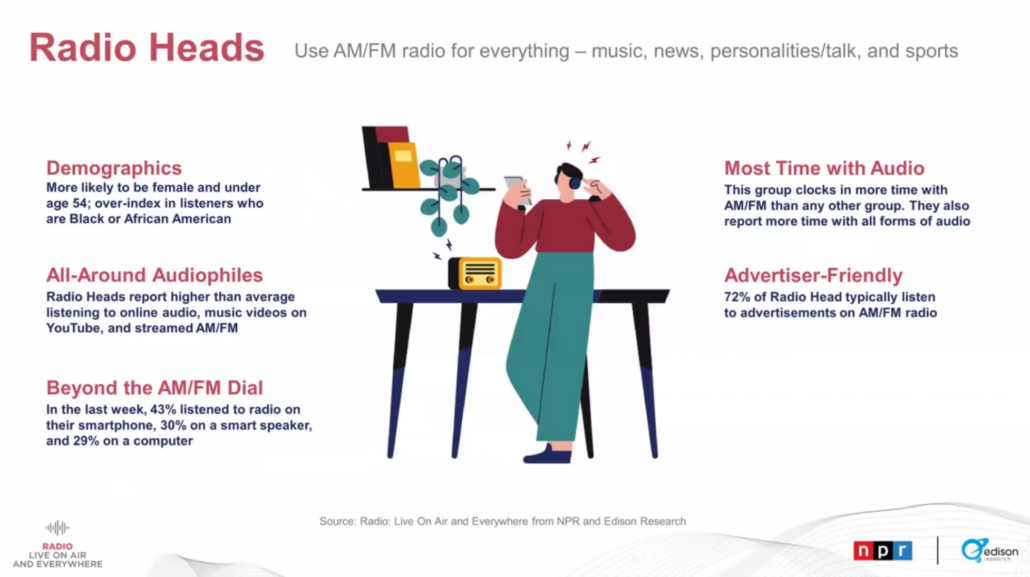
Connection Seekers (16%): Listen to radio primarily for company and connection and are highly engaged by personalities. More likely to be female and index over age 55 and white. Over-index in listening to spoken word audio. More at-home listening than all other groups, except Radio Heads.
Infomaniacs (18%): Their radio tuning is driven by news and information. Only segment where men account for a higher percentage than women. 96% listen for news, 78% for music, 43% for personalities/talk. Over-index in high paying jobs and college education.
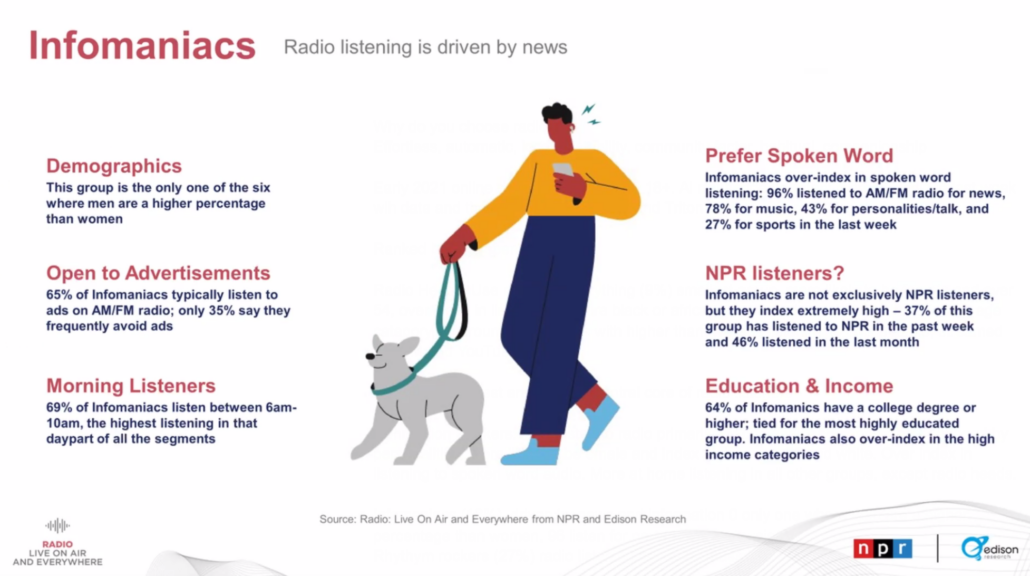
Rhythym Rockers (27%): Radio listening is driven by music. This group skews the most heavily female and is the youngest segment with three-quarters age 18-54. More likely to use online streaming services like Spotify and YouTube. Over-index in listeners who are Latinx, lower income.
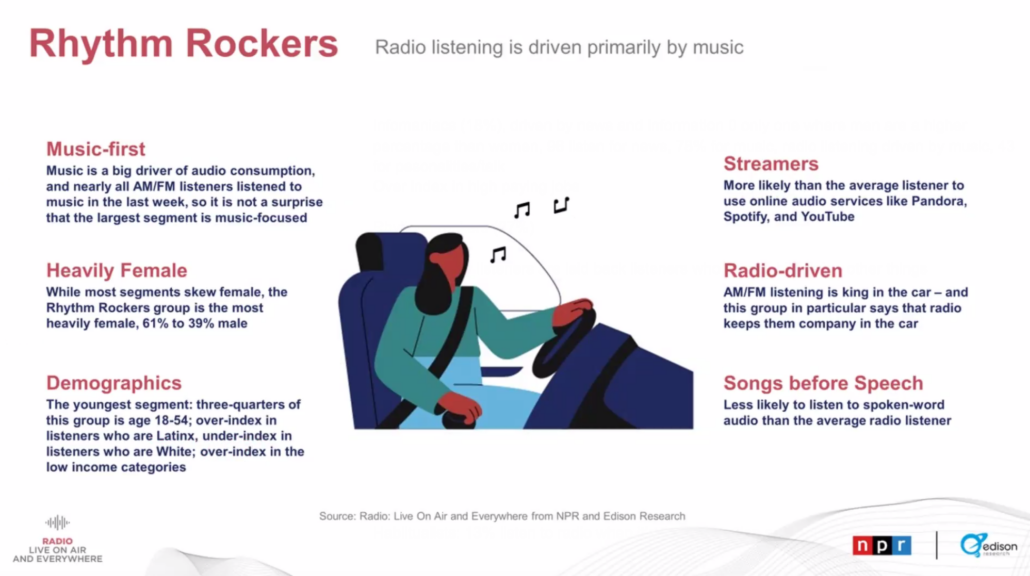
Laid Back Listeners (17%): Listen while doing other things. Skew older and white with 76% over age 35. Prefer listening on a radio receiver (95%), more apt to try to avoid advertisements than other groups.
Habitualists (13%): Listen to radio when it’s the only option available. 78% over age 35, far less than average use of online audio services, most apt to try to avoid advertisements on AM/FM radio. Under-index in listening to spoken word audio, but would miss radio if it were no longer available.
More engaged listeners more open to ads
Edison’s research also found that the more engaged one is with radio, the more they’re open to advertising. The biggest avoiders of ads, the Habitualists segment, were those spending the least amount of time with the medium, however over half still typically listened to ads on the radio.
The data indicates listeners are more engaged with ads on AM/FM radio than social media or television, while remaining competitive with podcast and online audio ad engagement.
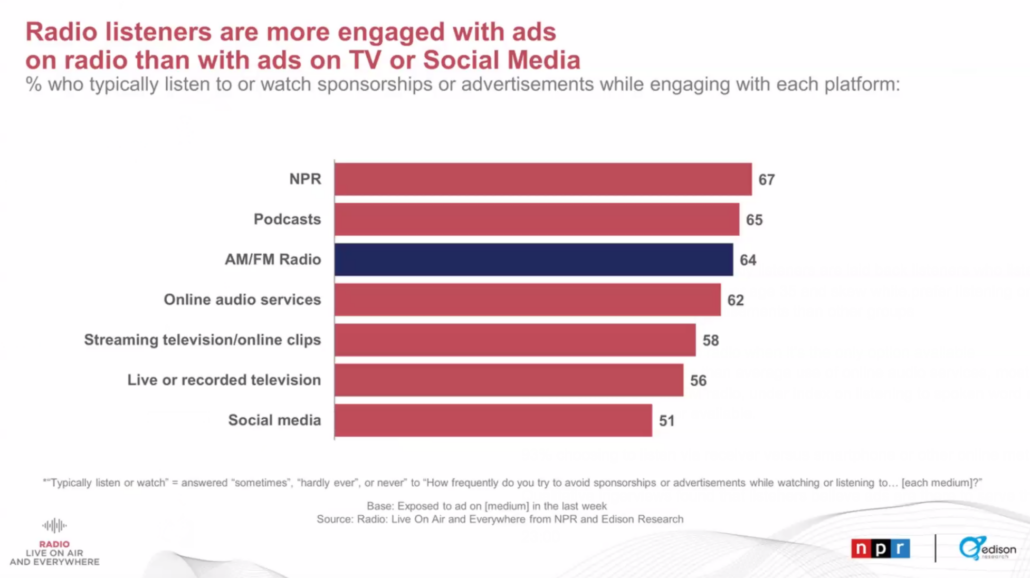
The survey says 46% of weekly radio listeners have considered a new company, product or service after hearing an ad on AM/FM radio and about one-third have purchased a product or service after hearing an ad on radio. 47% of those surveyed learned about a local business from AM/FM Radio vs. 31% on a streaming platform or TV.
47% of weekly radio listeners also agreed that ads are a fair trade for the free content they get on AM/FM. That’s 11 percentage points higher than when respondents were asked the same question about television.
“Radio sometimes has trouble standing out and telling its story, but that’s what happens when something is such a deep part of so many people’s lives,” said Megan Lazovick, Vice-President, Edison Research.
“Even in a world where people have so many more options, it is by far the most listened to in terms of reach and the most used audio option in terms of time,” Lazovick continued. “Just because something has been around for awhile doesn’t mean it isn’t there providing enormous audiences and engaged responses from tens of millions of people every hour in every day.”
Subscribe Now – Free!
Broadcast Dialogue has been required reading in the Canadian broadcast media for 25 years. When you subscribe, you join a community of connected professionals from media and broadcast related sectors from across the country.
The Weekly Briefing from Broadcast Dialogue is delivered exclusively to subscribers by email every Thursday. It’s your link to critical industry news, timely people moves, and excellent career advancement opportunities.
Let’s get started right now.



